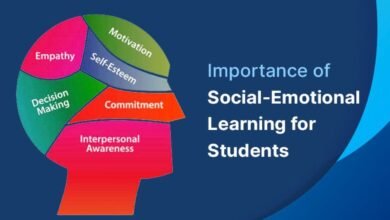The Impact of Remote Learning on Students and Teachers

Remote learning, also known as distance learning or online education, has become a significant part of the educational landscape, particularly since the COVID-19 pandemic forced schools worldwide to close their doors and move classes online. The rapid shift to remote learning has had profound effects on both students and teachers. While it has allowed for continued education during challenging times, it has also introduced new challenges and opportunities that were not present in traditional classroom settings. This article explores the impact of remote learning on students and teachers, delving into both the benefits and the challenges faced by each group.
The Benefits of Remote Learning for Students
Remote learning has provided students with unprecedented flexibility in how, when, and where they learn. This flexibility can be particularly beneficial for students who thrive in a self-paced learning environment. For example, some students may find that they learn best early in the morning or late at night, and remote learning allows them to schedule their study time around their personal rhythms. Additionally, students can rewatch recorded lectures, pause and rewind as needed, and spend more time on challenging concepts without the pressure of keeping up with the rest of the class.
Another advantage of remote learning is the ability to access a broader range of resources. In a traditional classroom, students are often limited to the materials provided by the teacher. However, in an online setting, students can access a wealth of information from various sources, including online libraries, educational websites, and digital textbooks. This can lead to a richer learning experience as students are encouraged to explore topics more deeply and independently.
Remote learning also has the potential to reduce social pressures and distractions that can negatively affect students’ ability to focus and learn. In a remote setting, students who may feel self-conscious or anxious about participating in a classroom can engage with the material at their own pace, without the fear of judgment from their peers. This can be particularly beneficial for introverted students or those with social anxiety, allowing them to contribute to discussions and ask questions in a less intimidating environment.
The Challenges Faced by Students in Remote Learning
Despite its benefits, remote learning also presents several challenges for students. One of the most significant issues is the lack of face-to-face interaction with teachers and peers. In a traditional classroom, students can immediately ask questions, receive feedback, and engage in spontaneous discussions that enhance understanding and learning. However, in a remote environment, this type of immediate interaction is often limited, which can lead to feelings of isolation and hinder a student’s ability to fully grasp the material.
Another challenge is the digital divide, which refers to the gap between those who have access to reliable internet and digital devices and those who do not. Students from low-income families or rural areas may struggle to participate in remote learning due to a lack of resources, leading to unequal learning opportunities and outcomes. Furthermore, even students with access to technology may face technical difficulties, such as unstable internet connections or outdated devices, which can disrupt their learning experience.
Remote learning also requires a high level of self-discipline and motivation, which can be challenging for some students to maintain over extended periods. Without the structured environment of a classroom and the direct oversight of a teacher, students may find it difficult to stay focused and complete assignments on time. This can lead to procrastination, lower levels of engagement, and ultimately, poorer academic performance. Additionally, the lack of a physical separation between home and school can blur the boundaries between personal and academic life, making it harder for students to establish a healthy work-life balance.
The Benefits of Remote Learning for Teachers
For teachers, remote learning offers several benefits that can enhance their teaching experience and professional development. One of the most significant advantages is the opportunity to innovate and experiment with different teaching methods and technologies. In a remote setting, teachers can incorporate a variety of digital tools and resources, such as videos, interactive quizzes, and virtual simulations, to create more engaging and dynamic lessons. This can help to cater to different learning styles and keep students interested in the material.
Remote learning also allows teachers to provide more personalized feedback to students. In a traditional classroom, it can be challenging to give individualized attention to each student due to time constraints and the number of students in a class. However, in an online environment, teachers can use digital tools to track students’ progress and provide targeted feedback that addresses specific areas of improvement. This can lead to a more tailored learning experience that better meets the needs of each student.
Additionally, remote learning can offer teachers greater flexibility in terms of when and where they work. This flexibility can be particularly beneficial for teachers who have caregiving responsibilities or other personal commitments that make a traditional 9-to-5 schedule challenging. By allowing teachers to work from home, remote learning can help to reduce stress and improve work-life balance, leading to greater job satisfaction and well-being.
The Challenges Faced by Teachers in Remote Learning
However, remote learning also presents several challenges for teachers, many of which are related to the need for new skills and resources. One of the most significant challenges is the steep learning curve associated with mastering new technologies and digital tools. Many teachers were not adequately trained for online teaching before the pandemic, and the sudden shift to remote learning required them to quickly adapt to new platforms and software. This can be particularly daunting for teachers who are less familiar with technology or who lack access to adequate training and support.
Another challenge is the difficulty of maintaining student engagement and motivation in a remote setting. In a traditional classroom, teachers can use a variety of strategies, such as group activities, hands-on learning, and real-time discussions, to keep students engaged. However, in an online environment, these strategies are often less effective, and teachers must find new ways to capture students’ attention and maintain their interest in the material. This can be particularly challenging in classes with a large number of students or when teaching subjects that require hands-on practice, such as science labs or art.
Remote learning also makes it more challenging for teachers to build relationships with their students and create a sense of community in the classroom. In a traditional setting, teachers can interact with students face-to-face, pick up on non-verbal cues, and create a supportive learning environment. However, in an online setting, these interactions are often limited to text-based communication or video calls, which can make it harder to build rapport and foster a sense of belonging among students.
The Impact on Educational Outcomes and Equity
The shift to remote learning has also raised important questions about its impact on educational outcomes and equity. While remote learning can offer a more flexible and personalized approach to education, it also has the potential to exacerbate existing inequalities. For example, students from disadvantaged backgrounds may be more likely to face challenges related to the digital divide, such as lack of access to technology or a quiet place to study. Additionally, students with learning disabilities or special educational needs may find it more difficult to access the support they need in a remote setting.
Research on the impact of remote learning on educational outcomes has yielded mixed results. Some studies have found that remote learning can be just as effective as traditional classroom instruction, particularly when it is well-designed and includes interactive elements. However, other studies have found that students, particularly younger students and those from disadvantaged backgrounds, tend to learn less in a remote setting compared to a traditional classroom. These disparities highlight the need for targeted interventions and support to ensure that all students have access to high-quality remote learning opportunities.
The Future of Remote Learning
As schools and universities continue to navigate the challenges and opportunities of remote learning, it is clear that it will remain a significant part of the educational landscape for the foreseeable future. The experiences of the past few years have demonstrated that remote learning can be a valuable tool for expanding access to education and providing more flexible learning options. However, it has also highlighted the need for careful planning and support to ensure that all students and teachers can succeed in an online environment.
To maximize the benefits of remote learning and mitigate its challenges, educators and policymakers must focus on several key areas. These include providing adequate training and support for teachers, ensuring that all students have access to the necessary technology and resources, and developing strategies to keep students engaged and motivated in a remote setting. Additionally, there is a need for ongoing research and evaluation to better understand the impact of remote learning on different groups of students and to identify best practices for online education.
Conclusion
Remote learning has transformed the educational landscape, offering new opportunities for flexibility and personalized learning while also presenting significant challenges for students and teachers. As the world continues to adapt to the realities of remote learning, it is crucial to address these challenges and ensure that all students have access to high-quality education, regardless of their circumstances. By focusing on equity, support, and innovation, we can create a more inclusive and effective education system that meets the needs of all learners.



